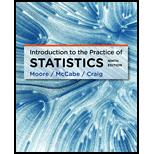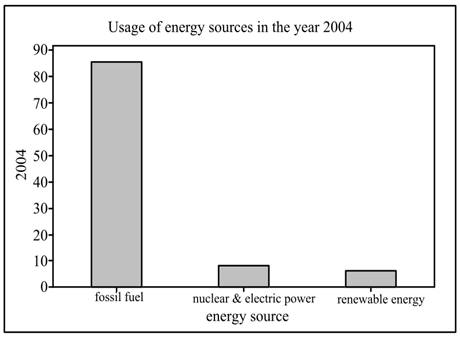
Concept explainers
To find: The changes from 2004 to 2014 in the usage of different energy sources, that is, fossil fuels, nuclear and electric power, and renewable energy.
Answer to Problem 145E
Solution: In the year 2014, less fossil fuel energy was used than in 2004. In the year 2014, more renewable energy was used than in 2004. Also, in the year 2004 and 2014, there was almost no change in the usage of nuclear and electric power energy source.
Explanation of Solution
Calculation: As provided in the above table approximately 86% fossil fuel of total energy sources was used in 2004 and approximately 80% in 2014, so it is clear that less amount of fossil fuel was used in 2014 as compared to the year 2004. While in case of renewable energy, approximately 10% of total energy sources was used in 2014 and in 2004, its usage was only 6% of total energy source, so the usage of renewable energy is higher in 2014 as compared to 2004. In the case of Nuclear and electric power, the usage in both the years is almost same, so this can be considered as there is no change in the usage of this energy source.
Graph: With the help of Minitab, display the figures of usage of energy source for the years 2004 and 2014 in the graphical form as shown below:
Step 1: Go to
Step 2: In the dialog box that appears, select the option ‘Values from a table’ for the representation of ‘Bars’. Also, select ‘Simple’ from ‘One column of values’ and click OK.
Step 3: Select the years ‘2004’ and ‘2014’in the ‘Graph variables’ textbox. In the ‘Categorical variable’ select the variable ‘energy source’ and click OK.
Hence, the obtained graphs are shown below:


As seen clearly from the above graphs, it can be said that the amount of usage of fossil fuels in 2014 is less as compared to 2004 and usage of nuclear and electric power is almost similar and the usage of renewable energy is more in 2014 as compared to 2004.
Interpretation: Therefore, it can be conclude that there is no change in the usage of nuclear and electric power in both the years while the usage of fossil fuel has been decreased in 2014 and the usage of renewable energy has been increased in 2014.
Want to see more full solutions like this?
Chapter 1 Solutions
Introduction to the Practice of Statistics
 MATLAB: An Introduction with ApplicationsStatisticsISBN:9781119256830Author:Amos GilatPublisher:John Wiley & Sons Inc
MATLAB: An Introduction with ApplicationsStatisticsISBN:9781119256830Author:Amos GilatPublisher:John Wiley & Sons Inc Probability and Statistics for Engineering and th...StatisticsISBN:9781305251809Author:Jay L. DevorePublisher:Cengage Learning
Probability and Statistics for Engineering and th...StatisticsISBN:9781305251809Author:Jay L. DevorePublisher:Cengage Learning Statistics for The Behavioral Sciences (MindTap C...StatisticsISBN:9781305504912Author:Frederick J Gravetter, Larry B. WallnauPublisher:Cengage Learning
Statistics for The Behavioral Sciences (MindTap C...StatisticsISBN:9781305504912Author:Frederick J Gravetter, Larry B. WallnauPublisher:Cengage Learning Elementary Statistics: Picturing the World (7th E...StatisticsISBN:9780134683416Author:Ron Larson, Betsy FarberPublisher:PEARSON
Elementary Statistics: Picturing the World (7th E...StatisticsISBN:9780134683416Author:Ron Larson, Betsy FarberPublisher:PEARSON The Basic Practice of StatisticsStatisticsISBN:9781319042578Author:David S. Moore, William I. Notz, Michael A. FlignerPublisher:W. H. Freeman
The Basic Practice of StatisticsStatisticsISBN:9781319042578Author:David S. Moore, William I. Notz, Michael A. FlignerPublisher:W. H. Freeman Introduction to the Practice of StatisticsStatisticsISBN:9781319013387Author:David S. Moore, George P. McCabe, Bruce A. CraigPublisher:W. H. Freeman
Introduction to the Practice of StatisticsStatisticsISBN:9781319013387Author:David S. Moore, George P. McCabe, Bruce A. CraigPublisher:W. H. Freeman





